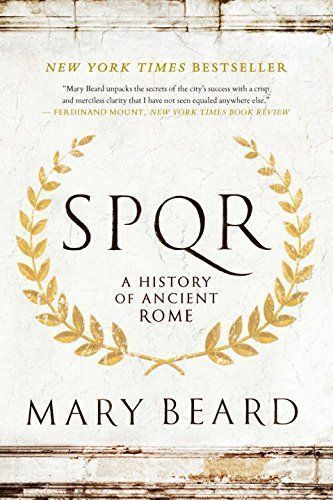
SPQR A History of Ancient Rome
New York Times Bestseller National Book Critics Circle Finalist Wall Street Journal Best Books of 2015 Kirkus Reviews Best Books of 2015 Economist Books of the Year 2015 New York Times Book Review 100 Notable Books of 2015 A sweeping, "magisterial" history of the Roman Empire from one of our foremost classicists shows why Rome remains "relevant to people many centuries later" Atlantic). "
Reviews
Barbara@brubru
Jamieson@jamiesonk
Arun Khanna@kilgoretrout
Matthew Serrano@mserrano
Elizabeth Neill@beersbooksandboos
Nelson Zagalo@nzagalo
Emmett@rookbones
Pascual@ecam
Tanja Rintala@tanjarintala
Ben S@beseku
Tobias V. Langhoff@tvil
D VA@pneumatic
Michael Ernst@beingernst
Andrei Stanciu@andreistanciu
Alan@alancph
Daniel Gynn@danielgynn
Georgi Mitrev@gmitrev
Eugenia Macedo Orozco@eugeniamacedo
Siddharth Ramakrishnan@siddharthvader
Andrew Louis@hyfen
Laura Griffin@laurawiththecurlyhair
Dean Sas@dsas
Isobel @isobel_1711
Jacob Mishook@jmishook
Highlights
Razi Syed@razi
Razi Syed@razi
Razi Syed@razi
Razi Syed@razi
Razi Syed@razi